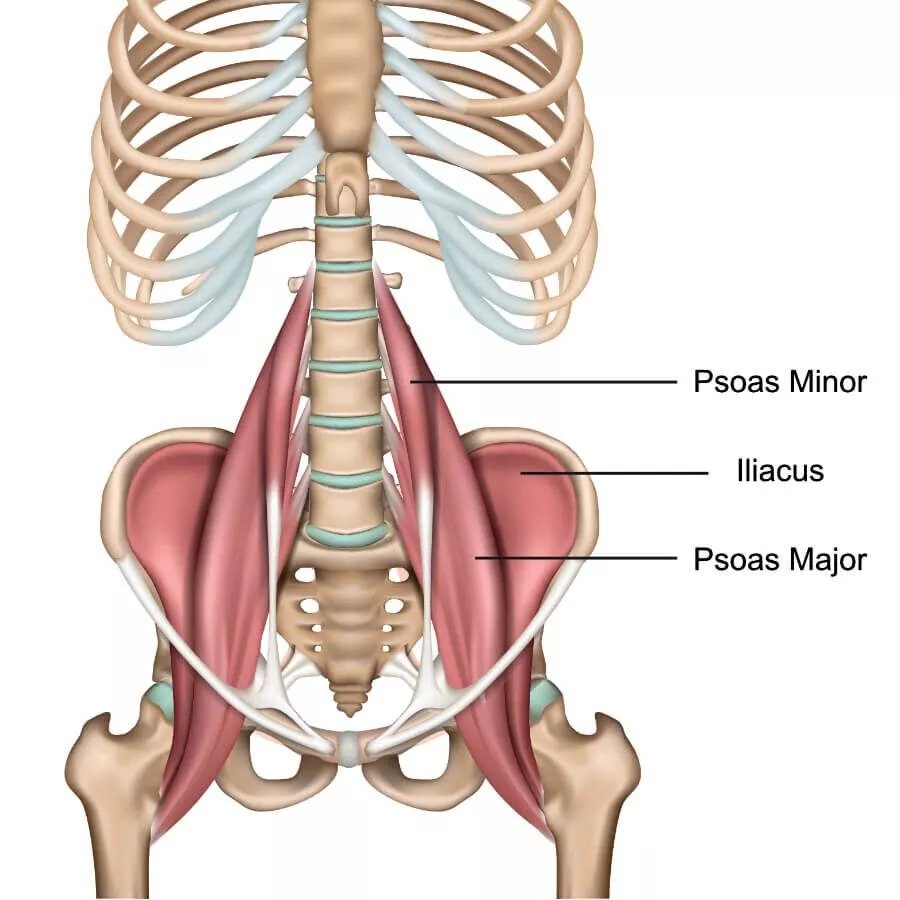The Psoas Muscle: The Bridge Between Stress, Trauma, and Healing
The psoas muscle is one of the most fascinating and misunderstood structures in the body. It’s not just a deep core stabilizer; it’s an emotional time capsule, a silent witness to every moment of stress, anxiety, and trauma we've experienced. A healthy psoas, however, is supple, responsive, and integrated into the body's movement with ease—it signifies a sense of safety, fluidity, and connection to both the physical and energetic self. Whether you're a movement expert, a healer, or just someone trying to feel better in your body, the psoas deserves your loving attention. When we explore its role through the nervous system, chakra system, and somatic yoga therapy, we uncover a powerful key to healing chronic stress, anxiety, PTSD, and trauma.
Understanding the Psoas and Its Role in the Body
The psoas is a core muscle that spans from the lumbar spine to the femur, anchoring us to the earth and supporting upright posture. Physically, it’s essential for stability, mobility, and alignment. But what makes it truly fascinating is its connection to the sympathetic and parasympathetic branches of the nervous system.
Under chronic stress or trauma, the psoas can become overactive and tense, acting as a storage site for unresolved emotions and energy. This tension is a survival mechanism tied to the “fight or flight” response, mediated by the vagus nerve and the sympathetic nervous system. However, prolonged tension in the psoas can lead to emotional imbalance, energy blockages, and physical discomfort.
The Psoas and the Nervous System
The psoas is intimately linked to the sympathetic (fight-or-flight) and parasympathetic (rest-and-digest) nervous systems.
Chronic stress and trauma tighten the psoas, reinforcing patterns of tension in the body.
Deep breathing and somatic yoga therapy engage the vagus nerve, promoting relaxation and nervous system regulation.
A tense psoas can lead to chronic pain, digestive problems, pelvic floor dysfunction, and more.
Shallow breathing, increased anxiety, and heightened stress responses can make your psoas tight.
The Psoas and the Chakra System
The chakra system is a key energetic framework in yoga and Eastern medicine. The psoas directly influences:
Root Chakra (Muladhara): Governs stability, safety, and survival. A tight psoas can indicate fear and insecurity held in the body, and can block grounding energy.
Sacral Chakra (Svadhisthana): Associated with creativity, emotions, and flow. Tension in the psoas may be related to emotional suppression and energetic stagnation.
Solar Plexus Chakra (Manipura): Relates to personal power and confidence. A well-functioning psoas supports a strong core and a sense of inner strength.
For more on embodiment read this blog, Embodiment: A Path to Healing from Trauma.
The Psoas as a Pathway to Wholeness
This muscle responds to emotional, energetic, and physical states, making it an essential focus for healing.
Trauma and stress cause habitual tension, but the right approach can unlock resilience and deep well-being.
Somatic awareness and yoga therapy provide the tools to reconnect with the body's wisdom, fostering embodiment and emotional healing.
How Somatic Yoga Therapy Supports Healing
Somatic yoga therapy emphasizes gentle, intentional movements that promote nervous system regulation and neuroplasticity. By engaging the body’s parasympathetic response—the “rest and digest” state—these practices help calm the overactive sympathetic response often triggered by trauma and chronic stress.
Here are some ways somatic yoga therapy works:
Regulating the Nervous System: Techniques like deep diaphragmatic breathing and slow, flowing movements stimulate the vagus nerve, encouraging a parasympathetic state that fosters relaxation and healing.
Releasing Trauma and Emotions: The psoas acts as a repository for unresolved trauma. Through mindful movement and somatic practices, it’s possible to release trapped energy and emotions, freeing the body from old patterns of tension.
Building Emotional Resilience: Somatic yoga therapy teaches tools for navigating stress and emotional challenges. Over time, these practices reshape the brain’s response to stressors, thanks to neuroplasticity.
Promoting Embodiment: By cultivating awareness of bodily sensations and their connection to emotions, participants develop a deeper relationship with their inner world, empowering them to move through life with greater confidence and clarity.
The Path to Resilience and Transformation
Chronic stress, anxiety, depression, PTSD, and trauma can make it feel impossible to break free from cycles of tension and disconnection. Yet, somatic yoga therapy offers a path to profound transformation. By addressing the psoas and its role in the nervous system and chakra system, this therapeutic approach helps individuals release what no longer serves them and rediscover their natural state of balance and resilience.
If you’re ready to embark on a journey of healing, regulation, and self-discovery, somatic yoga therapy provides the tools and support to reconnect with your body’s innate wisdom. Together, we can move toward a future of greater ease, emotional freedom, and embodied living.
Reference: https://www.positivehealth.com/article/bodywork/the-primordial-psoas-and-the-chakra-system


